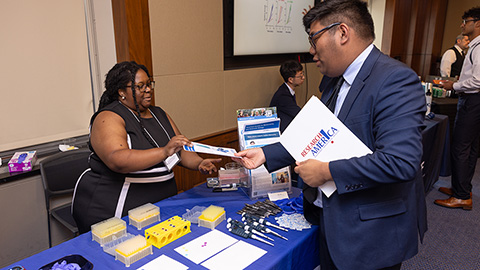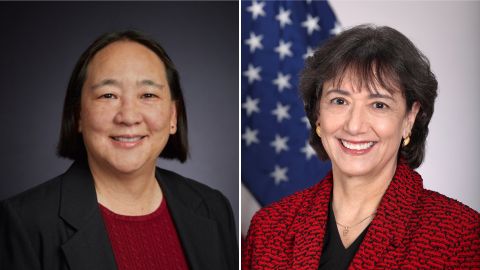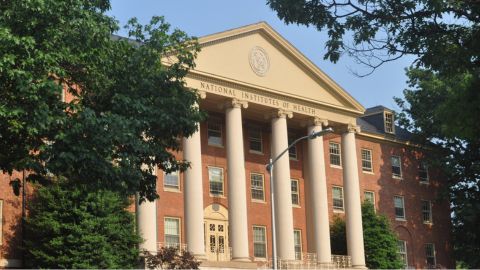Are postdocs still invisible?
In 1969, the National Research Council published a report entitled “The Invisible University.” It was referring to the status of postdoctoral researchers, or “postdocs,” as a rarely appreciated part of academe despite being essential to producing the future leaders of the research enterprise. This status prevented equitable compensation and opportunities for career development. Postdoctoral fellows had no voice to express their needs. While progress has been made and some institutions have developed exemplary postdoctoral training experiences, this type of training is not universal, and one factor contributing to the disparity of postdoc experiences is the diverse titles used to classify postdocs.
We already have too many names for “postdoc” to count. Even though the postdoctoral position is a crucial step on the academic career path and research productivity is highly dependent on their experience, postdoctoral researchers have been slotted into various designations across departments and institutions in a piecemeal and unregulated fashion. Their positions often depend on the hiring departments, international tax codes and grant requirements.
Academe is unable to count them (most often, individual institutions cannot even give an accurate figure for their own postdoctoral researcher population). Consequently, an unknown fraction of postdoctoral researchers are missing institutional training opportunities designed to enhance career development beyond the laboratory, such as grant writing, mentoring and leadership. This invisibility also means that the range of postdoctoral benefits and salaries is vast, and individuals remain in postdoctoral positions for unknown periods of time. It is not unheard of for postdoctoral researchers to be on salaries of around $25,000 after more than a decade of experience. These incidents illustrate the difficulty in tracking the career development of postdoctoral researchers. We do not know who they are, how long they hold postdoctoral positions or where they go afterward. This means that a group recognized federally as both trainees and employees and mostly federally funded is largely an unknown entity both in demographics and training. This is a very real barrier to efforts to establish how postdoctoral researchers are contributing to the society that invests in them beyond research output. It is also a hurdle to creating a diverse and highly trained professoriate.
We are proposing a reform of postdoctoral categorization. Institutions should collect all postdoctoral hires into one grouping labeled “postdoc” that can then be broken down into as many subtitles as the institution wishes. For example, an institution may choose three titles: “postdoctoral employee,” “postdoctoral fellow” and “postdoctoral fellow paid direct.” All three titles would be allotted the same career-development opportunities and would participate in the same postdoctoral benefits program. The first classification, “postdoctoral employee,” would be paid from a grant. “Postdoctoral fellow” would refer to those paid by the institutional allowance attached to a fellowship. “Postdoctoral fellow paid direct” would mean those paid with funds made available for benefits paid directly to the postdoc. In collaboration with institutions and human resources groups, we are preparing a detailed plan to provide guidance for implementation, comparing best practices and common challenges to establish the plan.
This proposed change comes at an important time, given the new regulations regarding salary exemptions for overtime pay through the Fair Labor Standards Act. Institutions will need to track postdoctoral trainees to demonstrate compliance with these and other federal regulations. What we propose will lessen the administrative and, potentially, legal burden for institutions in addition to providing equitable training opportunities and aiding in the analysis of this critical population in academe.
Enjoy reading ASBMB Today?
Become a member to receive the print edition four times a year and the digital edition weekly.
Learn moreFeatured jobs
from the ASBMB career center
Get the latest from ASBMB Today
Enter your email address, and we’ll send you a weekly email with recent articles, interviews and more.
Latest in Policy
Policy highlights or most popular articles

ASBMB releases statement on sustaining U.S. scientific leadership
The society encourages the executive and legislative branches of the U.S. government to continue their support of the nation’s leadership in science.

ASBMB and advocacy: What we accomplished in 2024
PAAC members met with policymakers to advocate for basic scientific research, connected some fellow members with funding opportunities and trained others to advocate for science.

‘Our work is about science transforming people’s lives’
Ann West, chair of the ASBMB Public Affairs Advisory Committee, sits down Monica Bertagnolli, director of the National Institutes of Health.

Applied research won’t flourish without basic science
Three senior figures at the US National Institutes of Health explain why the agency remains committed to supporting basic science and research.

ASBMB weighs in on NIH reform proposal
The agency must continue to prioritize investigator-initiated, curiosity-driven basic research, society says.

ASBMB seeks feedback on NIH postdoc training questions
The National Institutes of Health takes steps toward addressing concerns about support caps, a funding mechanism and professional development.


